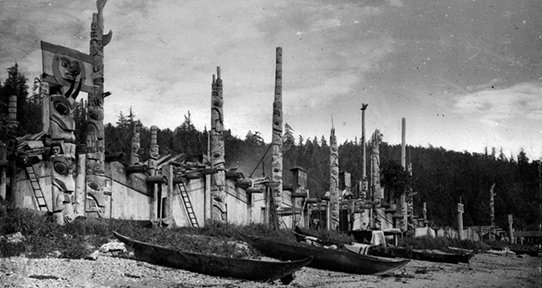How the totem pole became a symbol of Canada
History chair John Lutz writes in The Tyee that the much appropriated totem pole has been reclaimed by Indigenous artists around the globe.
"The totem pole is an unlikely candidate for a national icon. Totem poles existed in relatively few First Nations communities in a sliver of what is now British Columbia and southern Alaska, so remote that even in 1910 they could only be reached by several days’ boat journey north from Victoria and Vancouver; Indigenous culture was considered by many Canadians, including prime minister King, to be “barbaric”; and, finally, totem poles were no longer being carved, and those that survived were in a state of decay, largely because the Indigenous peoples of the West Coast who had carved them were under intense pressure to abandon their culture. (The ceremony needed to carve and raise a totem pole — the potlatch — was actually against the law!) How, then, did these rare and exotic disappearing carvings, many of which were in Alaska, come to be a symbol of Canada?"
Read the excerpt from the new collection Symbols of Canada in The Tyee.

